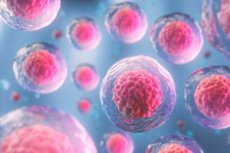New publications
Iron feeds immune cells - and it can worsen asthma
Last reviewed: 02.07.2025

All iLive content is medically reviewed or fact checked to ensure as much factual accuracy as possible.
We have strict sourcing guidelines and only link to reputable media sites, academic research institutions and, whenever possible, medically peer reviewed studies. Note that the numbers in parentheses ([1], [2], etc.) are clickable links to these studies.
If you feel that any of our content is inaccurate, out-of-date, or otherwise questionable, please select it and press Ctrl + Enter.

You've probably heard that you can get iron from spinach and steak. You may also know that it's an essential micronutrient that's a major component of hemoglobin, the protein in red blood cells that carries oxygen from your lungs to all parts of your body.
A lesser-known important function of iron is its involvement in energy generation for certain immune cells.
In a recently published study from our lab, we found that blocking or limiting the flow of iron into immune cells could potentially alleviate the symptoms of an asthma attack triggered by allergens.
Immune cells that require iron
During an asthma attack, harmless allergens activate immune cells in your lungs called ILC2s (intrinsic lymphoid cells type 2). This causes them to multiply and release large amounts of cytokines, the messengers that immune cells use to communicate, causing unwanted inflammation. The result is symptoms like coughing and wheezing, which makes it feel like your airways are constricted.
To assess the role of iron in ILC2 function in the lung, we conducted a series of experiments with ILC2 in the lab. We then validated our findings in mice with allergic asthma and in patients with varying degrees of asthma severity.
Experimental results
First, we discovered that ILC2s use a protein called transferrin receptor 1 (TfR1) to take up iron. When we blocked this protein when ILC2s were activated, the cells couldn’t use the iron and were no longer able to replicate and cause inflammation as effectively as they had before.
We then used a chemical called an iron chelator to prevent ILC2 from using iron. Iron chelators are like super magnets for iron and are used medically to manage conditions where there is too much iron in the body.
When we deprived ILC2s of iron with a chelator, the cells were forced to change their metabolism and switch to a different way of getting energy, like switching from a sports car to a bicycle. The cells were no longer as effective at causing inflammation in the lungs.
Next, we limited cellular iron in mice with sensitive airways due to ILC2 activity. We did this in three different ways: by inhibiting TfR1, adding an iron chelator, or inducing low overall iron levels with a synthetic protein called mini-hepcidin. Each of these methods helped reduce the airway hyperreactivity in the mice, which actually reduced the severity of their asthma symptoms.
Finally, we looked at cells from asthma patients. We noticed something interesting: the more TfR1 protein they had on their ILC2 cells, the worse their asthma symptoms were. In other words, iron played a big role in the severity of their asthma. Blocking TfR1 and using iron chelators reduced ILC2 proliferation and cytokine production, suggesting that our mouse findings are applicable to human cells. This means we can move these findings from the lab into clinical trials as quickly as possible.
Iron Therapy for Asthma
Iron is like an orchestra conductor, telling immune cells like ILC2 how to behave during an asthma attack. Without enough iron, these cells can't cause as much trouble, which could mean fewer asthma symptoms.
Next, we are working on targeting the patient’s immune cells during an asthma attack. If we can reduce the amount of iron available to ILC2s without depleting overall iron levels in the body, this could lead to a new therapy for asthma that addresses the underlying cause of the disease, not just the symptoms. Current treatments can control symptoms to keep patients alive, but they do not cure the disease. Iron-based therapies may offer a better solution for asthma patients.
Our discovery isn’t just applicable to asthma. It could be a game-changer for other diseases that involve ILC2s, such as eczema and type 2 diabetes. Who would have thought that iron could be so important for your immune system?
The results of the work are described in detail in an article published in The Conversation journal.
